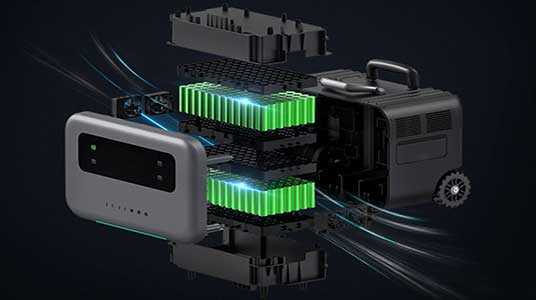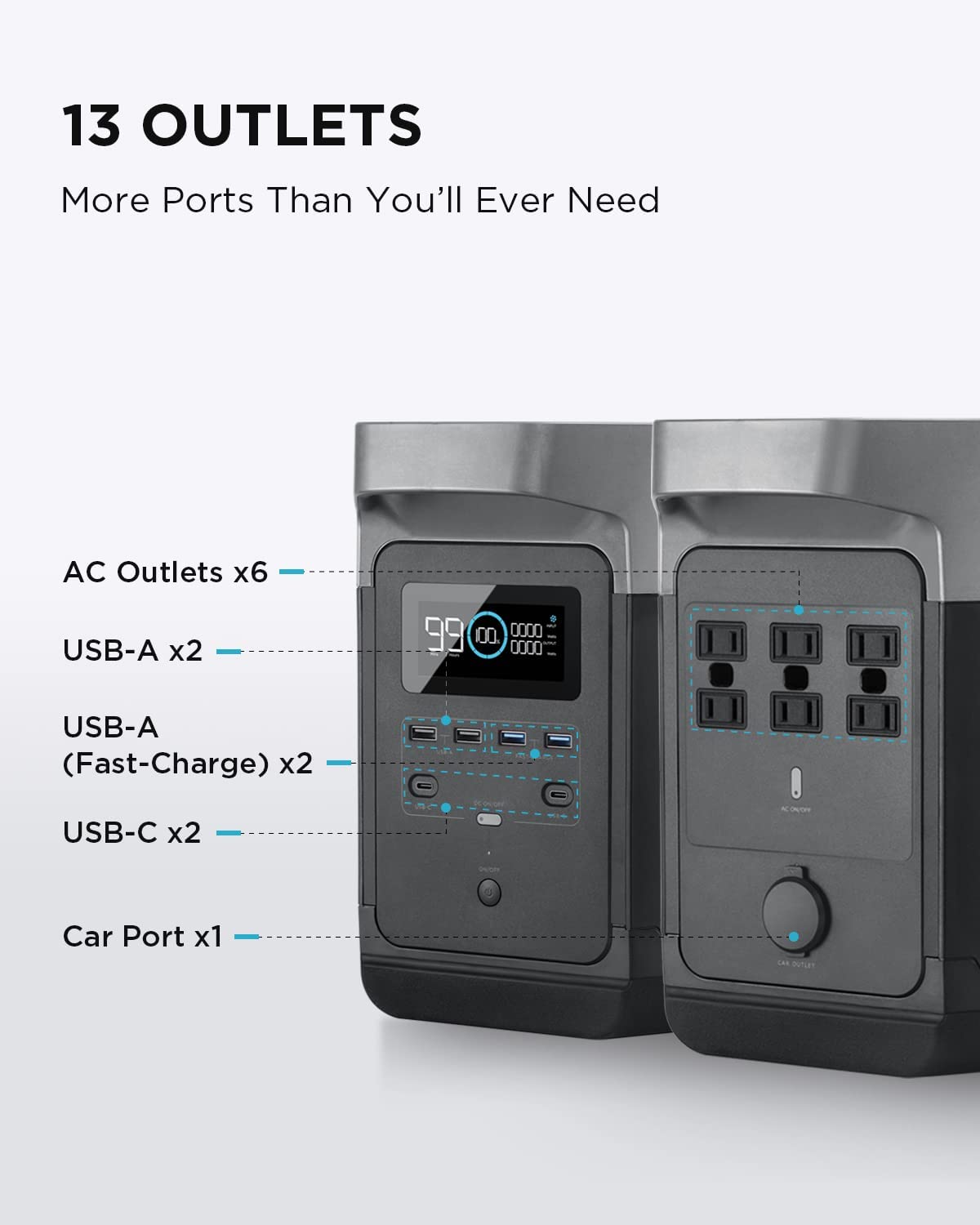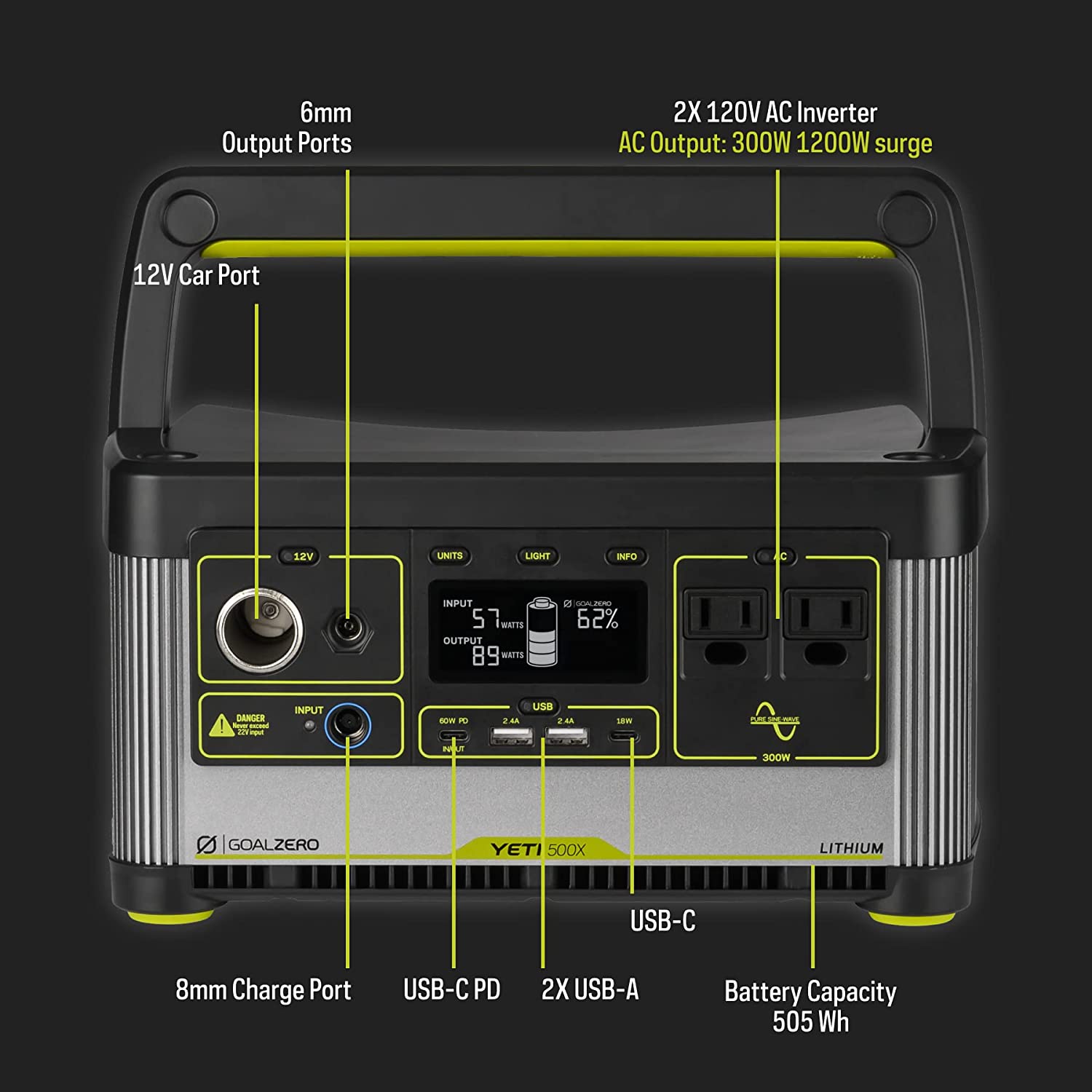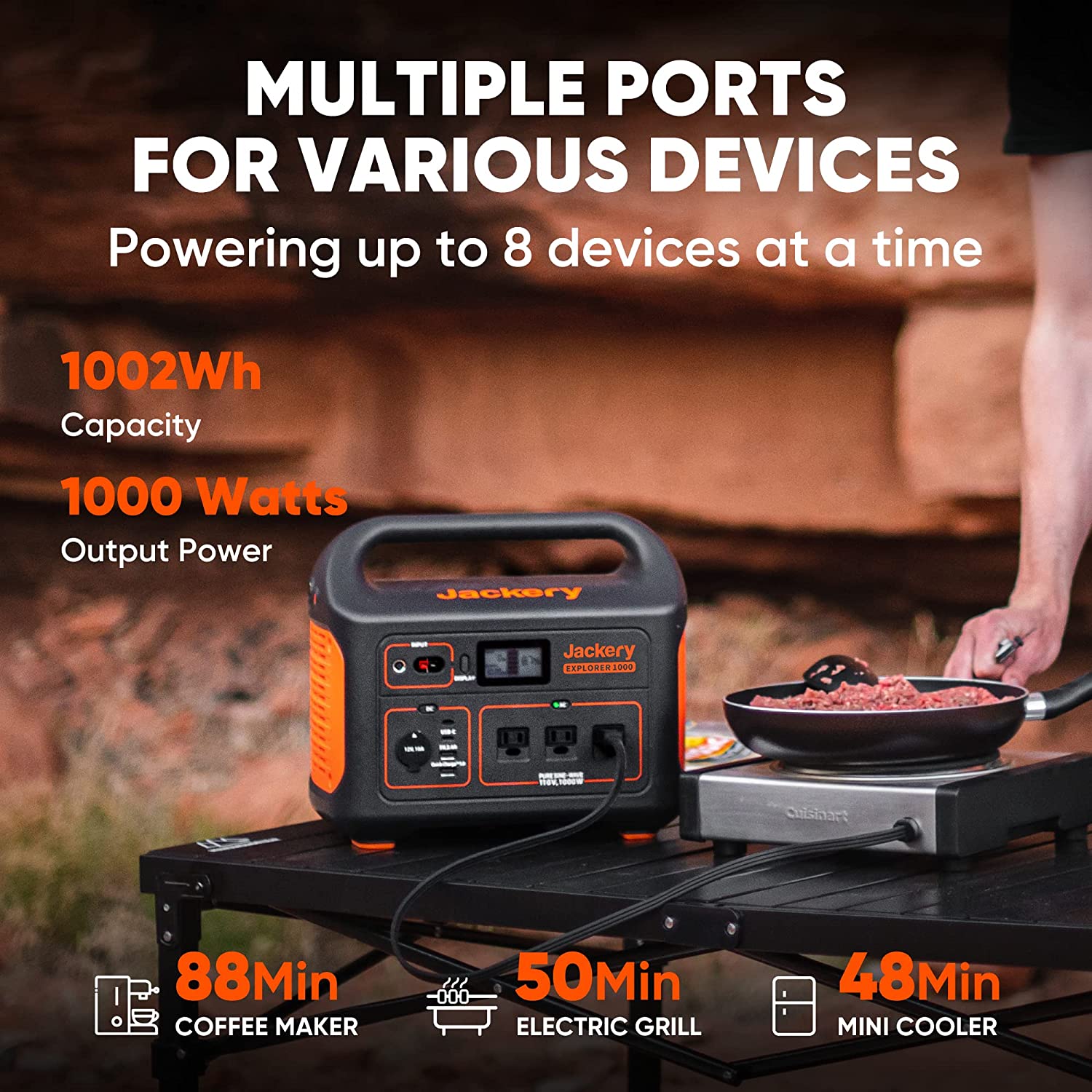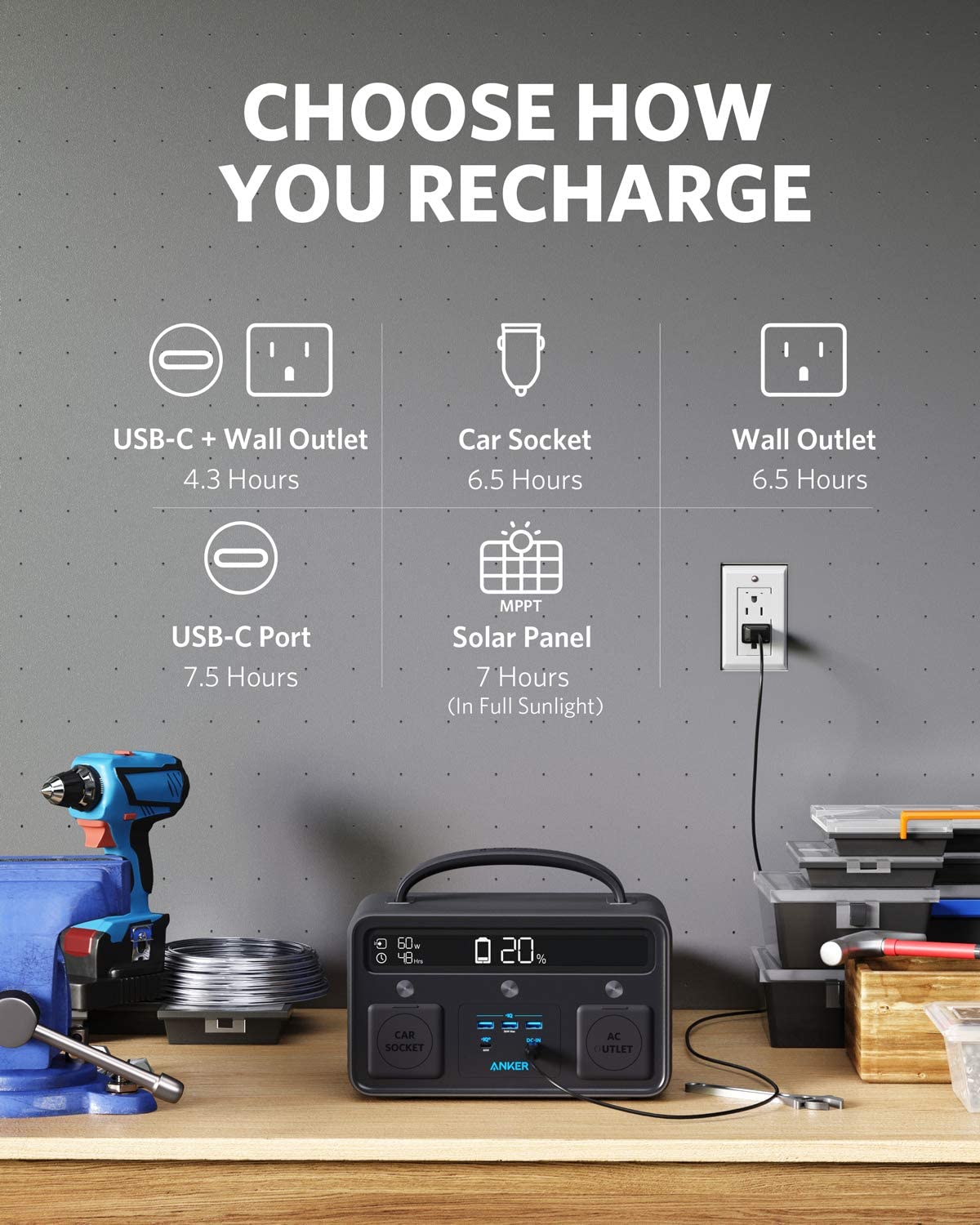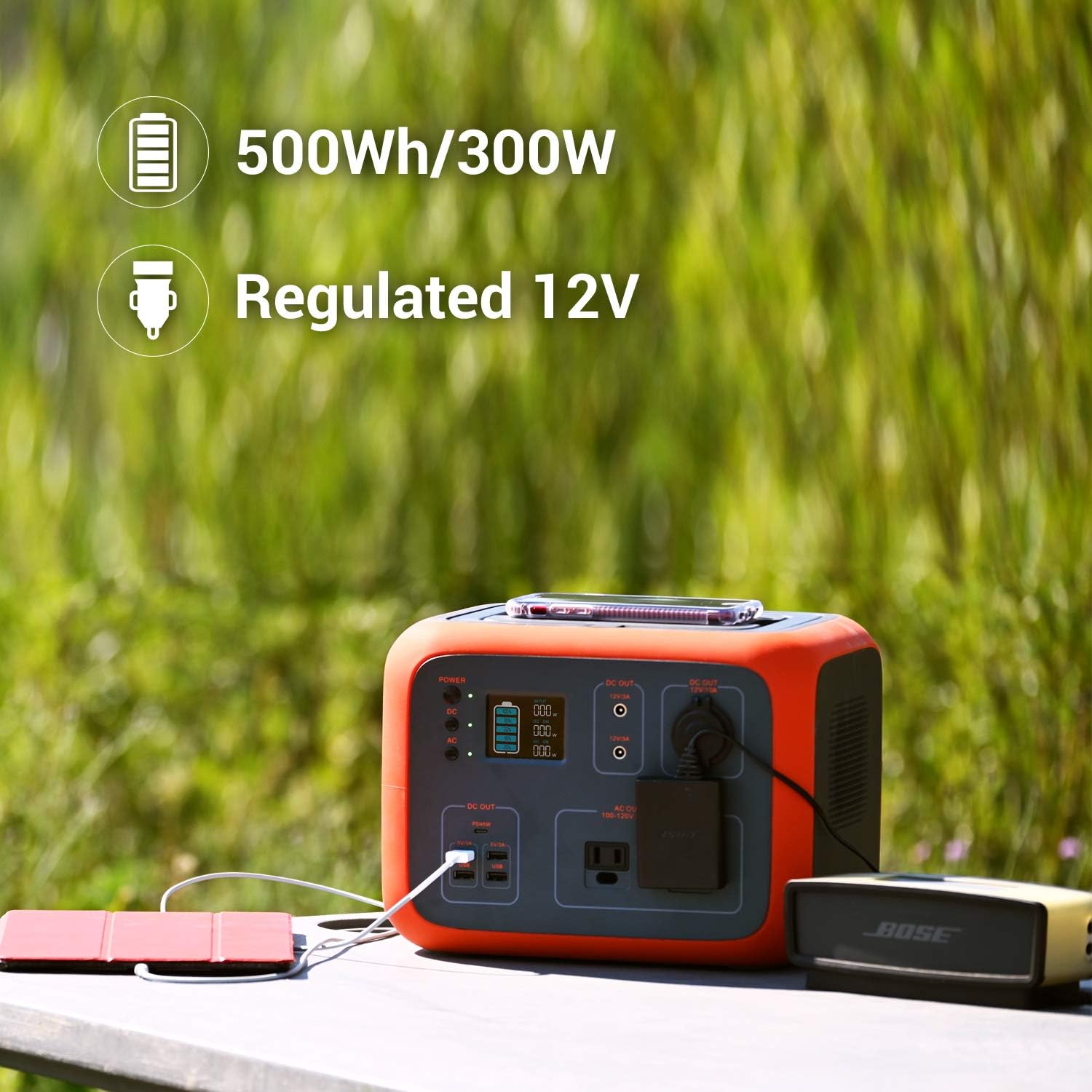Demand for portable power stations has surged in recent years, influenced by several key factors. Frequent and severe weather events causing power outages have prompted many to seek reliable backup power solutions. The growing trend of digital nomadism and popular outdoor activities, such as camping and RVing, have created a need for portable power sources. Furthermore, as our dependence on technology increases, power accessibility has become not only a convenience but a necessity, from work sites and outdoor events to emergency situations, driving the demand for portable power solutions.
What to Look for in a Portable Power Station
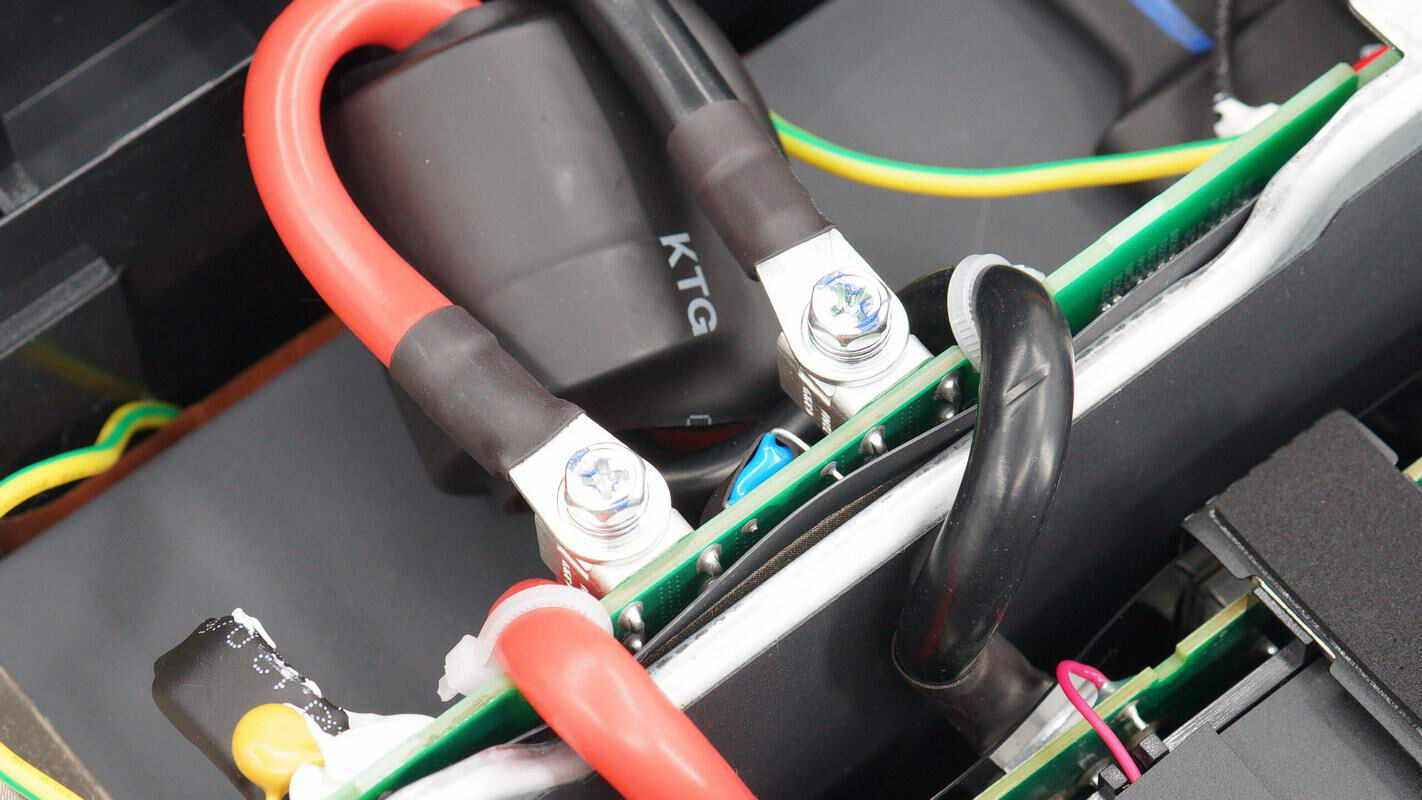
A portable power station can be an invaluable tool for outdoor enthusiasts, digital nomads, or anyone seeking a reliable backup power source. However, not all power stations are created equal. Here are some key factors to consider when shopping for a portable power station:
Capacity/Power Output
The capacity of a power station is usually measured in watt-hours (Wh) and it determines how much power the device can hold. Higher capacity means the station can power more devices or run for longer. Make sure to choose a model that has sufficient capacity to handle your power needs. Remember that high-draw appliances like a mini fridge or a laptop will require a power station with a higher capacity.
Size and Weight
As these devices are meant to be portable, the size and weight are critical considerations. If you plan to take it on camping trips or other outdoor adventures, you’d want a power station that’s compact and light enough to transport easily.
Number and type of ports (USB, AC, DC)
Different devices require different types of ports. Most power stations offer a variety of ports, including USB for smartphones, AC outlets for larger appliances, and DC for certain types of electronics. Make sure the power station you choose has the ports you need for your devices.
Charging methods (wall outlet, solar, car)
Most power stations can be charged via a wall outlet, but some also offer the option to charge using solar panels or a car’s DC outlet. Solar charging can be a great feature if you’ll be spending time outdoors, while car charging can be handy for road trips.
Battery life and durability
Battery life refers to how long the power station can provide power before needing to be recharged. Durability is also crucial, especially if you’ll be using the power station outdo
ors. Look for models with robust construction and high-quality batteries.
Additional features (built-in lights, digital displays, etc.)
Some power stations come with extra features like built-in lights, which can be useful in emergency situations, or digital displays that show important information like remaining battery life or power output. While not always necessary, these features can make using the power station more convenient.
Price
As with any purchase, price is an important consideration. Portable power stations can range from under $100 for small, basic models to over $1000 for high-capacity models with advanced features. Be sure to balance your budget with your power needs and the features you want.
Review of the Best Portable Power Stations
| Model | Capacity/Power Output | Number and Type of Ports | Charging Methods | Weight | Additional Features | Price |
|---|---|---|---|---|---|---|
| EcoFlow Delta 1300 | 1260Wh / 1800W (3300W surge) | 6 AC outlets, 2 USB-C, 4 USB-A | Wall socket (1.6 hrs), Solar panels (4-8 hrs) | Heavy | Fast charging, Multiple ports | High |
| Goal Zero Yeti 500X | 505Wh | 3 USB ports, 2 AC outlets, 1 DC car port | AC outlet (8.5 hrs), Solar panels (4-8 hrs) | Light | Compact, Portable | Medium |
| Jackery Explorer 1000 | 1002Wh / 1000W (2000W surge) | 3 AC outlets, 2 USB-C, 2 USB-A | AC outlet (7 hrs) | Heavy | LCD screen, User-friendly | High |
| Anker Powerhouse II 400 | 388Wh | 3 AC outlets, 60W USB-C, 3 USB-A | AC outlet (5 hrs) | Light | Compact, Portable | Low |
| BLUETTI AC50S 500Wh | 500Wh | 4 USB-A, 1 PD45W USB-C, 2 300W AC outlets | AC outlet (5.5 hrs), Solar compatible | Medium | Wireless charging pad | Medium |
| The weights are relative comparisons (light, medium, heavy), and the prices are indicative (low, medium, high) and may vary based on the seller, location, offers, etc. | ||||||
EcoFlow Delta 1300
Description and Specs: The EcoFlow Delta 1300 is a high-capacity, versatile power station with 1260Wh capacity and a total output of 1800W (3300W surge). It features multiple output ports, including six AC outlets, two USB-C, and four USB-A. It offers one of the fastest recharge rates, taking around 1.6 hours from a wall socket and 4-8 hours from solar panels.
Pros and Cons: The EcoFlow Delta 1300 boasts a powerful output, quick charging, and a multitude of ports, making it versatile for various power needs. However, it is relatively heavy, making it less suitable for lightweight travel, and the higher price point might deter budget-conscious consumers.
Goal Zero Yeti 500X
Description and Specs: The Goal Zero Yeti 500X is a compact and portable power station with a 505Wh capacity. It offers a variety of output options, including three USB ports, two AC outlets, and a 12V car port. It takes about 8.5 hours to recharge from an AC outlet and 4-8 hours from 100W solar panels.
Pros and Cons: Its compact size and versatile output options make the Yeti 500X ideal for camping trips and outdoor adventures. However, its smaller capacity might not suffice for power-heavy needs, and its recharging time is relatively long compared to some other models.
Jackery Explorer 1000
Description and Specs: The Jackery Explorer 1000 has a 1002Wh capacity with a 1000W output (2000W surge). It offers a multitude of ports, including three AC outlets, two USB-C, and two USB-A. Its recharge time from an AC outlet is about 7 hours.
Pros and Cons: The Jackery Explorer 1000 provides high power output and capacity, making it ideal for larger devices. It’s also quite user-friendly with an informative LCD screen. However, it is heavier than some models, and its recharge time is a bit slower.
Anker Powerhouse II 400
Description and Specs: The Anker Powerhouse II 400 is a compact, mid-capacity power station offering 388Wh and a variety of output ports, including three AC outlets, 60W USB-C, and three USB-A ports. It takes approximately 5 hours to recharge fully from an AC outlet.
Pros and Cons: The Anker Powerhouse II 400 is known for its portability and solid build quality. It’s an excellent choice for smaller devices and short trips. However, its capacity may not be sufficient for larger appliances, and it lacks a DC output.
BLUETTI AC50S 500Wh
Description and Specs: The BLUETTI AC50S is a portable power station offering a 500Wh capacity. It features a wide variety of output ports, including four USB-A, one PD45W USB-C, and two 300W AC outlets. It also supports solar charging and takes about 5.5 hours to recharge from an AC outlet.
Pros and Cons: The BLUETTI AC50S offers a good balance of capacity, portability, and variety of ports, including the increasingly essential USB-C. The inclusion of a wireless charging pad is a plus. However, it might be slightly heavy for some users, and its capacity might not be enough for power-intensive needs.
Choosing the Best Portable Power Station for Your Needs in 2023
Assess Your Power Needs
Identify the devices you intend to power. This will help you understand your power requirements and guide you towards the best portable power station for you in 2023.
Match Power Station Capacity
Choose a power station with a capacity that matches your power needs. Higher consumption or multiple devices will necessitate a station with higher watt-hours (Wh).
Portability Considerations
Depending on your usage – outdoor adventures versus home use during power outages – consider the size, weight, and portability of the power station.
Budget
The best portable power station for you would also be one that fits within your budget. High-capacity models usually cost more, but assess whether you need all the features offered.

The best portable power station for your needs in 2023 will depend on your power requirements, the station’s capacity and portability, and your budget.
